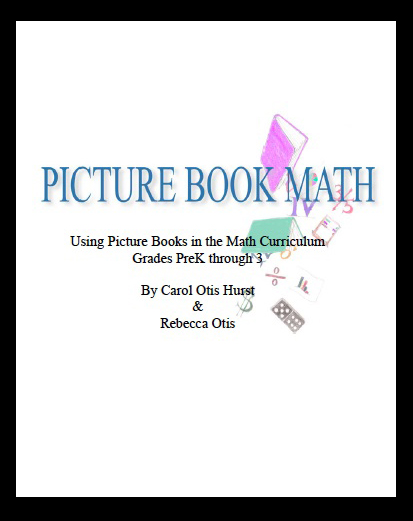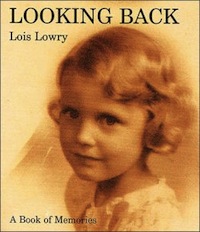Carol Hurst's Children's Literature Site Newsletter
Volume 19. Issue 2.
![]()
Author Study: Lois Lowry
A Bit About the Author and Reviews of Some of Our Favorite Books
With The Giver hitting the big screen this summer, I think it's the perfect time to plan an author study of Lois Lowry for the classroom. In addition to her immensely popular The Giver and the rest of "The Giver Quartet," she has written novels for younger students, wonderful series chapter books and picture books. There's lots to dig into and plenty of opportunities for comparing her diverse works for style, content, theme and more. Because of the breadth of her work, she's a good author for mixed age or mixed ability groups. I've also linked to an updated version of our article on author and illustrator studies in the classroom with any author/illustrator as well as links to other authors/illustrators with featured articles on our web site.
![]()
Please visit our advertisers who make this newsletter possible:
![]()
|
|
Featured Author: Lois Lowry
![]()
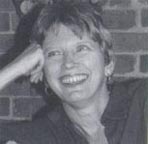
Lois Lowry is a witty, clever, interesting woman with many facets to her life. She's a great conversationalist, a knitter, an avid and eclectic reader and movie-goer, and besides that, she likes to play bridge and to garden. She's an excellent cook and her cookbook collection is enormous and varied. Her home is full of bookshelves which, of course, are full of books and, since she has a great need for order, her books are carefully arranged with her own rather eccentric system with no apologies to Dewey.
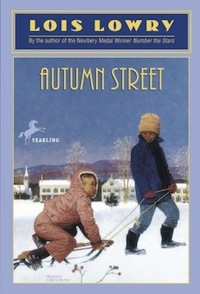 As a child whose father was in the military, she moved around a lot and spent the years of World War II with her mother's parents in central Pennsylvania before joining her father in post-war Japan. You can find out more about that house and town in Pennsylvania because she used it as the setting for Autumn Street (see below).
As a child whose father was in the military, she moved around a lot and spent the years of World War II with her mother's parents in central Pennsylvania before joining her father in post-war Japan. You can find out more about that house and town in Pennsylvania because she used it as the setting for Autumn Street (see below).
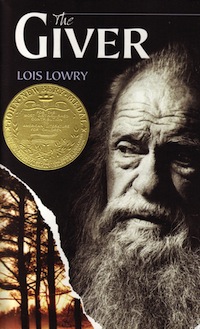 Lowry is an accomplished photographer (the cover of The Giver--see below--is her own work) with an artist's eye for composition. She sometimes compares the role of writer to that of photographer, saying that the writer carefully chooses the best lens and settings for her work, deciding which things to focus on and which to blur.
Lowry is an accomplished photographer (the cover of The Giver--see below--is her own work) with an artist's eye for composition. She sometimes compares the role of writer to that of photographer, saying that the writer carefully chooses the best lens and settings for her work, deciding which things to focus on and which to blur.
Most mornings you'll find Lois seated at her computer and at work by eight o'clock. A brief lunch break and she's back at it again at least until mid-afternoon. She writes novels, short stories and picture books, mostly for young people, but she also writes because it's so much a part of her that she turns to it constantly, both professionally and personally. When her son, an Air Force pilot, was killed when his plane crashed on takeoff she put together a book about him with photographs and a brief text for his two-year-old daughter so that she would remember what her father was like.
 A look at Lowry's prolific work as a writer is an occasion for amazement. It's so varied and always so good. Her first book, A Summer to Die (see below), centers around the death of a young girl as witnessed by her younger sister, Meg. Although the book is not totally based on fact, Lowry's own sister, Helen, died young of cancer and she used the memories of that tragic time in the story. Lowry calls that her most personal book even though, of course, it addresses the universal theme of life and death.
A look at Lowry's prolific work as a writer is an occasion for amazement. It's so varied and always so good. Her first book, A Summer to Die (see below), centers around the death of a young girl as witnessed by her younger sister, Meg. Although the book is not totally based on fact, Lowry's own sister, Helen, died young of cancer and she used the memories of that tragic time in the story. Lowry calls that her most personal book even though, of course, it addresses the universal theme of life and death.
 Lowry turned to a friend's memories in the writing of her Newbery Award winning Number the Stars (see below). Annemarie Johansen is based on Lowry's real-life friend Annelise. She used the role played by Annelise and her family during the occupation of Denmark to bring some awareness of the Holocaust to a slightly younger-than-usual audience.
Lowry turned to a friend's memories in the writing of her Newbery Award winning Number the Stars (see below). Annemarie Johansen is based on Lowry's real-life friend Annelise. She used the role played by Annelise and her family during the occupation of Denmark to bring some awareness of the Holocaust to a slightly younger-than-usual audience.
The Giver (see below) and the three other titles in "The Giver Quartet" series are her most ambitious works to date. The Giver earned her another Newbery Award and her acceptance speech tells of the many rivers of experience and inspiration that led her to write it. One of those rivers of inspiration came from her father who was, at that time, in a nursing home having lost most of his long-term memory. She realized one day while visiting her father that, without memory, there is no pain, and she began to imagine a society in which the past was deliberately forgotten.
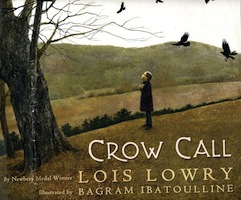 In her picture book Crow Call (see below) Lowry again drew on memories of her father to create a sensitive vignette of their hunt to kill crop-eating crows.
In her picture book Crow Call (see below) Lowry again drew on memories of her father to create a sensitive vignette of their hunt to kill crop-eating crows.
Lowry has said that each reader reads his or her own book and that is certainly shown in the varied reactions to The Giver. It is one of the most frequently censored books in the United States today. Ironically, it is attacked for being too Christian, for not being Christian enough, for being "new age" and for being too spiritual. It is criticized for being un-American and for stressing too many American middle class values, for being too pessimistic and not pessimistic enough. Saner folks seem to recognize it as a skillful and fascinating work of fiction, which challenges the reader to reexamine his or her own values and the directions current societies seem to be taking.
Recurrent themes for Lois Lowry seem to be saying goodbye, the importance of making connections with others, and finding a place where we belong. Her work is wide-ranging, richly varied and right on target for her intended audiences.
![]()
Some of Our Favorite Books by Lois Lowry
![]() Grades 4 - 9
Grades 4 - 9
Looking Back: A Book of Memories by Lois Lowry. Memoir. 181 pages.
Find this book: Local Bookstore, Amazon, B&N
This is so much more than an autobiography. It's not a typical memoir either. Lois Lowry's great-aunt and her father shared Lois's love for photography so she has a large collection of very good photographs of her family over several generations. She has taken from that collection a series of photographs that she uses to recall events and people from her past. Her evocative prose, together with those photographs, present a family with laughter, love and grief piling up on each other.
![]() Grades K - 2
Grades K - 2
Crow Call by Lois Lowry. Picture Book. 32 pages.
Find this book: Local Bookstore, Amazon, B&N
Lizzie and her father are reunited when he returns from World War II, but she has few memories of him and there is much he doesn't know about her. Together they go out so that she can use the crow call to draw the crows and her father can shoot the crop-eating pests. The gathering of crows and the father and daughter's feelings about killing them bring the two together. Beautifully written and illustrated.
Read the rest of this article.
Related Areas of Carol Hurst's Children's Literature Site
- Author Studies in the Classroom. General books and activities to use while studying any author.
-
Author & Illustrator Studies
A listing of all our featured author and illustrator articles.
That's it for this issue.
Happy reading!
- Rebecca Otis
You can read back issues of this newsletter in our archives at:
http://www.carolhurst.com/newsletters/newsletters.html
![]()
Please visit our advertisers who make this newsletter possible:
![]()
|
|
Advertisement:
Advertisement:
Advertisement:

